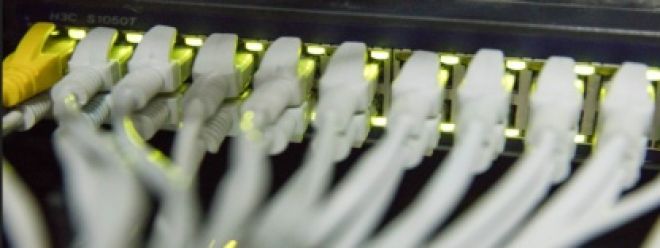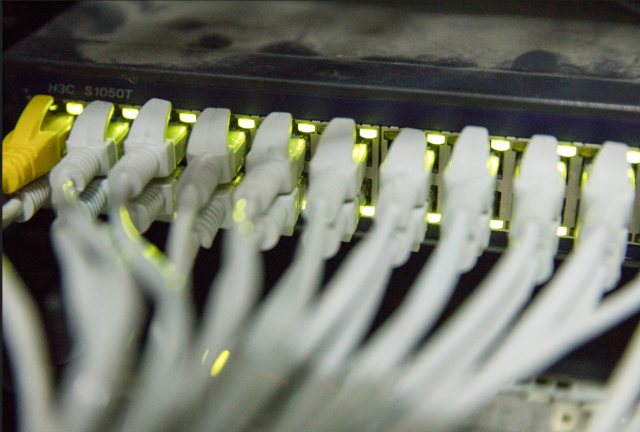Enterprise Switches and Their Selection Guide

Enterprise Switches and Their Selection Guide

An enterprise switch is a type of network switch that is deployed in large networks with many connections. These switches are not recommended for typical types, but refer only to the operating environment and application. Depending on the design, there are different types of enterprise switches. This article provides a detailed analysis of these switches, their hierarchy, types and applications.
Enterprise Switch Type
Enterprise Switches: Discussing Hierarchical Designs
All enterprise switches have the same layered design. In a LAN, switches are divided into three layers:
Core Switches: They form the backbone of any network. They are the gateway to the internet because they are at the center of the network. In any network there can be at least one or two core layer switches. This switch must be fast, fault-tolerant, and highly available. Therefore, only fully managed switches are used as core switches.
Distributed Switches: They act as a bridge between the core and access layer switches. As the name suggests, these switches ensure that data packets are properly routed through the network. It also takes care of policy-based networking and performs functions such as packet filtering, QoS, application gateway, and more. A network can include distribution layer switches equivalent to the sum of core layer switches and access layer switches. These switches are also known as aggregation switches or workgroup layer switches.
Access Switches: These switches help connect wired devices or end node devices such as APs to the network. They are the most important layer switches. Most of the switches you see in a network are access layer switches. Access switches are equipped with supported features such as VLANs, port security, Fast Ethernet/Gigabit Ethernet, and more.
Enterprise switch types based on design and application
Today, enterprises are implementing hybrid networks to take advantage of copper and fiber optic connections. As a result, we will see increased use of fiber optic network switches in many enterprise networks. These switches have better connectivity than traditional copper wire switches. If you have been considering any type of enterprise fabric switch for your business, it would be very helpful to consider the following types.
Managed switches: As the name suggests, these switches are managed by an administrator. They help build highly secure networks. Administrators can easily adjust these switches to optimize data rates as new users or devices are added to the network. Managed network switches are also considered the best option for supporting Gigabit Ethernet. Many network administrators today use managed switches to build virtual local area networks (VLANs), which allow them to segment the network and manage traffic efficiently.
Due to the wide range of features they offer, these switches are generally more expensive than unmanaged switches. For example, managed switches are equipped with Spanning Tree Protocol (STP), enabling administrators to easily perform their QoS duties. They can remotely control the switches for maximum safety. Despite the high cost factor, these switches allow administrators to build a custom efficient network with better traffic flow.
Unmanaged switches: Unmanaged switches have no managed functionality. Anyone with or without any technical knowledge can operate these switches. These switches require no special installation and are usually plug and play. Unmanaged switches feature autonegotiation, which enables ports on a switch, server, or router to communicate with other devices on the link.
This feature also enables the switch to recognize the connection speed and duplex configuration. These enterprise switches are the first choice for applications that require a minimal level of customization or no customization. If the administrator's goal is to connect remotely and customize it, extensive setup is required. Otherwise, they cannot monitor and manage it remotely.
POE Switch: PoE stands for Power over Ethernet Fiber Optic Network Switch, which distributes power to different devices on the network. These switches generate a PoE network, these switches generate a PoE network that supports both PoE and Ethernet devices. PoE switches are believed to introduce simplicity to the network as they reduce the need for wiring.
Any device on the PoE network can easily operate, even if they are not near the AC access point or router. The switch sends power and data to connected devices. These switches can transmit up to 100 meters over Ethernet. There are two types of PoE switches: active and passive PoE switches.
Active PoE switches: These switches are rated to the EEE 802.3af, IEEE 802.3at, or IEEE 802.3bt standards. They can negotiate the proper voltage between PD and PSE devices.
Passive PoE switches: These are non-standard PoE switches that provide power over the Ethernet line without communication or negotiation.
Smart Switch: This is a managed switch with little functionality for limited management options like duplex mode or VLANs. These switches are a great option if the network requires limited customization. With limited customization options, these devices are affordable.
How to Choose the Best Enterprise Switch for Your Application
When selecting an enterprise switch for an application, there are a few things to keep in mind. Optical network switches vary in design and application, so careful selection is required. The following instructions will simplify the selection.
Power: Do you want to power your device? If this sounds yes, a PoE network switch is the way to go. These switches also help you reduce cabling and infrastructure complexity.
Ports: Managed, unmanaged, PoE, and smart switches come with multiple ports. We can find these switches in different port sizes like 5, 8, 10, 16, 24, 28, 48 and 52. If your business is expanding rapidly, you may need a switch with the most ports. However, if you only have limited plans for expansion, it is recommended to choose a switch with a limited number of ports.
Stackability: If the business is expanding rapidly, more devices will need to be supported, which means investing in more switches. This is where stackable switches come in handy. These switches connect and help increase the availability and network capacity of the network. Also, if network expansion is limited, you can try a standalone switch. These switches work as a single entity and have limited capacity.
Speed: Regardless of the type of switch you choose, be sure to check the speed. These switches are available as Fast Ethernet, Gigabit Ethernet, and Ten Gigabit speeds.
Levels of Customization: Do you have one of the busiest traffic networks that requires a high level of management and customization? If this sounds yes, managed switches are the way to go. If only limited customization is required, the Smart Switch is a good choice. If the application does not require customization, it is better to include an unmanaged switch.
in conclusion
Choosing the right network switch will depend on the application requirements. All networks today use the above types of switches alone or in combination. If you're also considering a hybrid network using these switches and fiber optic devices, make sure you choose wisely. Enterprise switch configurations also vary, and not all switches are right for your application. In this case, you can check online catalogs for more information on these switches, or you can contact the manufacturer to make the right choice. After all, the enterprise network will be the main growth driver of the business.